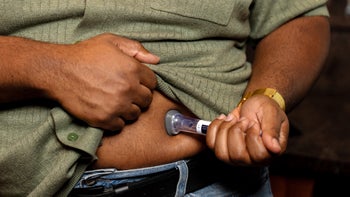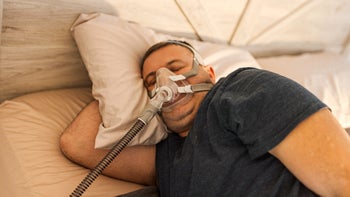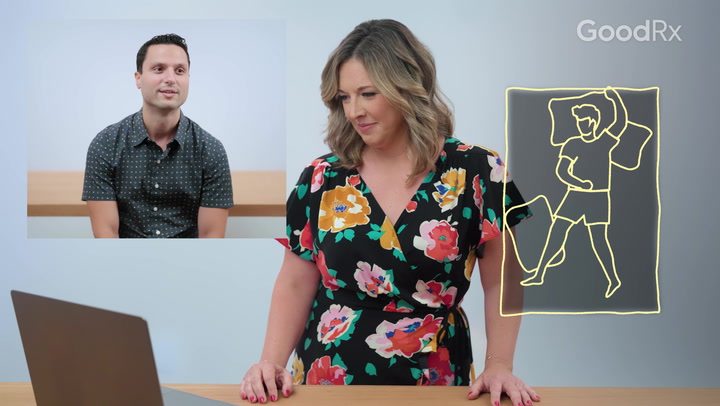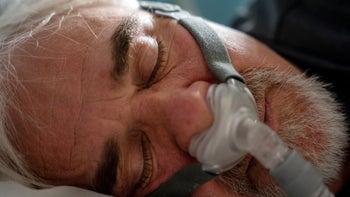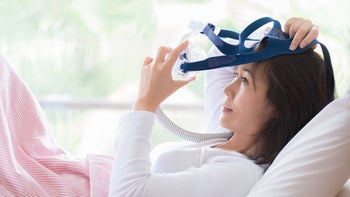
Is Home Sleep Apnea Testing Right for You?
Key takeaways:
Home sleep apnea testing (HSAT) is a sleep test that you do in your own home, rather than in a sleep lab.
For many people, HSAT is a convenient and reliable way to diagnose obstructive sleep apnea.
For other types of sleep disorders, testing in a sleep lab is still the best option.
Table of contents
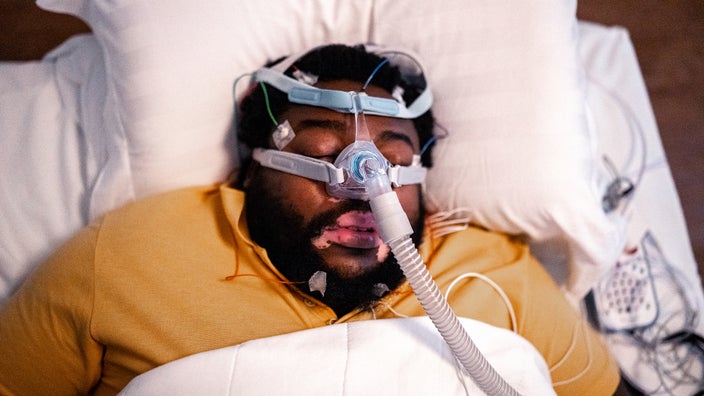
Sleep apnea is a common health condition where your breathing starts and stops while you sleep. This can happen many times during the night and make it hard to get a good night’s sleep. In some cases, sleep apnea can lead to other health problems, like high blood pressure and heart disease.
Fortunately, there’s treatment for sleep apnea. The first step is getting diagnosed. In the past, this meant sleeping overnight in a lab. But these days, home sleep apnea testing (HSAT) is a convenient alternative for many people.
Are you wondering if HSAT might be right for you? Read on for more information about how these tests work and whether they could be a good option for you or a loved one.
Search and compare options
How do you diagnose sleep apnea?
Sleep specialists diagnose sleep apnea with a sleep study, or a polysomnography (PSG). A PSG happens overnight at a sleep lab. While you sleep, a technician uses equipment to monitor your:
Brain waves
Eye movements
Heart rate
Breathing patterns
Body movements
A PSG can be helpful in diagnosing many different types of sleep disorders, including sleep apnea.
Another option is home sleep apnea testing (HSAT). Just like it sounds, you do HSAT overnight in your own home. You sleep in your own bed while wearing special equipment that collects data.
How do home sleep apnea tests work?
Home sleep apnea tests use special devices to record information while you sleep. Depending on the test, this could include data about your breathing, heart rate, body movements, and more.
After the test, the information is sent electronically to your sleep specialist. They will interpret the test results and decide whether you have sleep apnea.
Though HSAT is convenient, it doesn’t capture as much information as a PSG. Because of its limitations, HSAT is mostly used for diagnosing people with obstructive sleep apnea (OSA).
What are the pros and cons of home sleep apnea testing?
PSG is the gold standard when it comes to diagnosing many sleep disorders, including sleep apnea.
So how does HSAT compare? Here are some pros and cons to keep in mind.
Pros
Benefits of HSAT include:
It’s more convenient.
You get to sleep in your own bed.
It’s usually less expensive than PSG.
It’s easier to repeat over time.
It’s a good test for diagnosing obstructive sleep apnea.
Cons
Cons of HSAT include:
It might not be covered by insurance as easily as PSG.
It can be hard to use the equipment correctly.
It might not be an option if you have other health problems.
It’s not good for diagnosing other types of sleep disorders, like central sleep apnea or parasomnias (like sleepwalking or nightmares).
What at-home tests are available for sleep apnea?
According to the American Academy of Sleep Medicine, an “adequate” HSAT should monitor at least one of the following:
The airflow in your nose, your breathing patterns, and the amount of oxygen in your blood
The blood flow in your vessels, your physical movements, and the amount of oxygen in your blood
Several HSATs meet these requirements. Examples include:
WatchPAT: This is a popular test that is especially easy to use. You only need to wear a small device on your wrist and finger.
ApneaLink Air: With this system, you wear a chest belt, nasal cannula, and fingertip sensor.
Alice NightOne Home Sleep Test: With this system, you also wear a chest belt, nasal cannula, and fingertip sensor.
Nox T3: This test includes a chest and abdominal belt, nasal cannula, and wrist and fingertip sensors.
The BresoDX1 is also a new type of test that will be available in 2023. It uses a small sensor over your windpipe and a fingertip sensor.
Can you use a fitness tracker to test for sleep apnea?
No. Smartwatches and other fitness trackers aren’t a good substitute for HSAT. Although some can track your sleep, research shows that personal devices aren’t very reliable when it comes to detecting sleep apnea. If you’re worried about sleep apnea, HSAT or PSG are your best options.
What do at-home sleep apnea test results show?
It depends on which test you use. Most HSATs monitor at least four of the following:
Breathing patterns
Air flow in your nose
Heart rate
Heart activity (electrocardiogram)
Oxygen levels in your blood (pulse oximetry)
Body position
Body movement
Blood flow through your vessels (peripheral arterial tonometry)
Your healthcare provider will use this information to figure out if you have sleep apnea — and whether or not you need follow-up testing or treatment.
Are there some results you can’t get from HSAT?
Yes. Home tests are good at monitoring breathing but not sleep patterns. Some things can only be monitored in an actual sleep lab.
For example, your home test won’t be able to record information about your:
Brain activity
Eye movements
Total sleep time
Sleep quality
Nighttime seizures
Appearance when you’re sleeping
How can you get an at-home sleep apnea test?
If you’re interested in an at-home sleep test, talk to your healthcare provider. HSAT should only be used as part of a thorough sleep evaluation, as prescribed by a trained professional. To get a test, you can either see a provider in person or work with a telehealth (online) sleep specialist.
When should you talk to your provider about sleep apnea?
Talk to your provider if you notice any of the following symptoms of sleep apnea:
Snoring frequently
Feeling tired during the day
Waking up a lot at night
Feeling like you are choking or being smothered at night
Having morning headaches or dry mouth
Experiencing low sex drive (low libido)
If you’re seeing a primary care provider, they may also recommend that you talk with a sleep specialist. A sleep specialist is a healthcare provider who has experience diagnosing and treating sleep disorders.
Can other health conditions be mistaken for sleep apnea?
Yes. Other sleep disorders can be mistaken for sleep apnea — especially if they cause daytime fatigue or get in the way of a good night of sleep. Examples include:
The bottom line
If you’re concerned about sleep apnea, talk to your healthcare provider. Based on your symptoms, they might recommend getting tested for sleep apnea. If you’re interested in home sleep apnea testing (HSAT), be sure to ask your provider about options. For many people, HSAT is a convenient and reliable way to diagnose obstructive sleep apnea — from the comfort of your own home.
Why trust our experts?


References
Bresotec Medical. (n.d.). Introducing a better way to test for sleep apnea.
Businesswire. (2023). Bresotec’s BresoDX1 for at-home sleep apnea testing receives FDA 510(k) clearance.
Collop, N. (2022). Home sleep apnea testing for obstructive sleep apnea in adults. UpToDate.
Itamar Medical Ltd. (n.d.). A new era of home sleep apnea testing.
Joshi, C. (2019). Sleep-related hypermotor epilepsy (SHE). Epilepsy Foundation.
Kapur, V. K., et al. (2017). Clinical practice guideline for diagnostic testing for adult obstructive sleep apnea: An American Academy of Sleep medicine clinical practice guideline. Journal of Clinical Sleep Medicine.
MedlinePlus. (2021). Central sleep apnea.
Memorial Sloan Kettering Cancer Center. (n.d.). Instructions for your Alice NightOne home sleep apnea test (HSAT).
National Heart, Lung, and Blood Institute. (2022). Sleep apnea: Symptoms.
National Heart, Lung, and Blood Institute. (2022). Sleep apnea: Treatment.
National Heart, Lung, and Blood Institute. (2022). Sleep studies.
Nox Medical. (n.d.). Nox T3s HST.
ResMed. (2019). ApneaLinkAir patient instructions.
Rundo, J. V., et al. (2019). Polysomnography. Handbook of Clinical Neurology.
Victoria State Government. (2021). Sleep apnoea. Better Health Channel.





